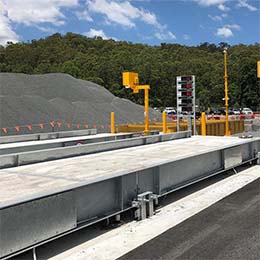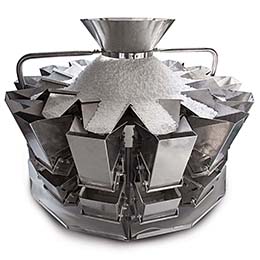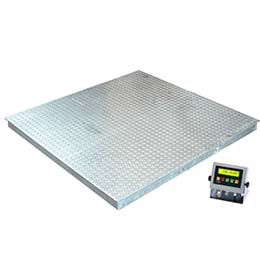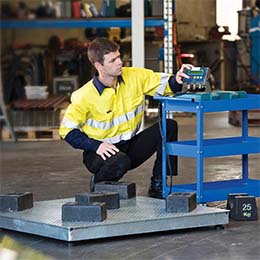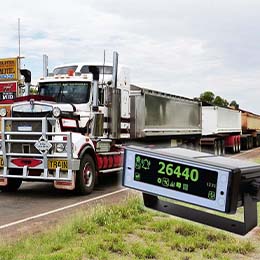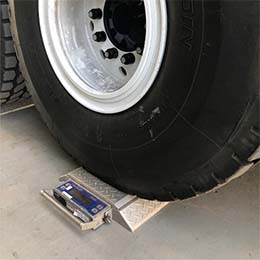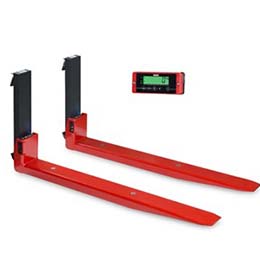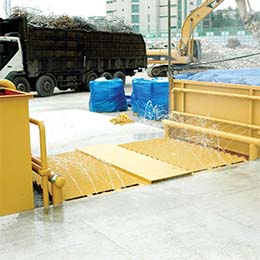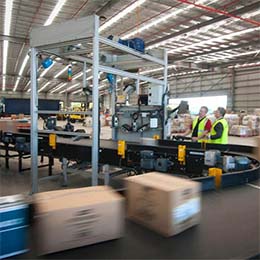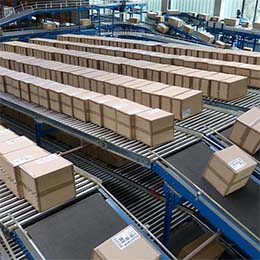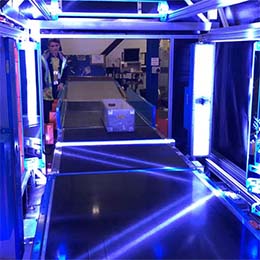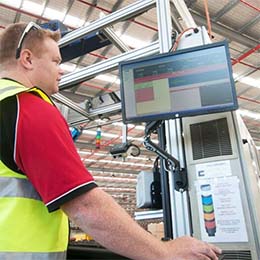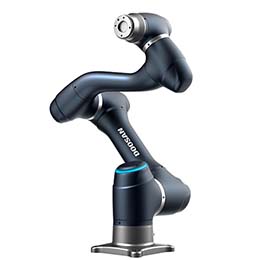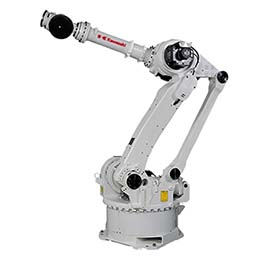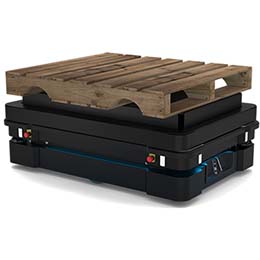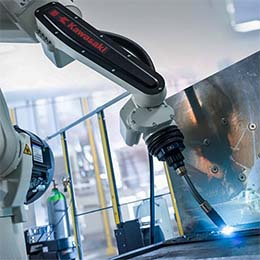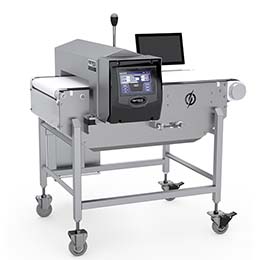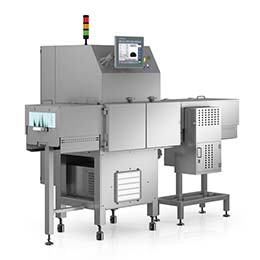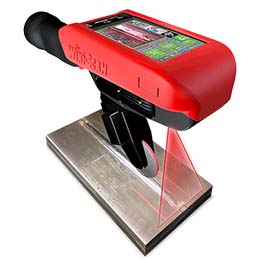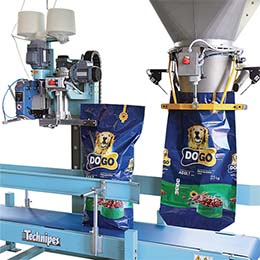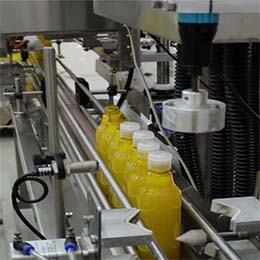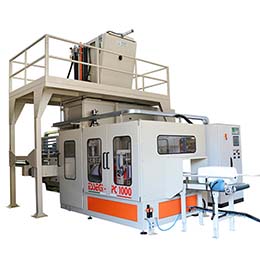It’s a beautiful Friday afternoon and you’ve got that unmistakable look of excitement on your face.
You see the courier you’ve been waiting for walking up to your front door wheeling a trolley loaded with four large boxes and you know what’s inside even before the doorbell rings. Hang on; four boxes, though? Perhaps he’s delivering to the neighbours as well and doesn’t want to walk back to his van.
Three days ago, you ordered four birthday presents for your two kids and today they’re being delivered. Instead of going to the shopping centre and stressing over what to buy and worrying about how you would get the presents to your car, this year you went online and, while sipping a cappuccino on the lounge, ordered each of their birthday presents in one sitting. You successfully saved yourself from all of that stress!

The doorbell rings. You open the door and happily sign the driver’s device for your delivery.
The courier is very helpful and places all four of the boxes in your lounge room for you. As you close the front door, you think to yourself, “I don’t remember ordering that many presents”.
You retrieve a knife from the kitchen and open the first box. Excited, you peek inside and surprise, all you see are those darned packing peanuts covering up what’s underneath. As you dig through the peanuts to reveal what’s inside, the peanuts overflow from the box. Great, now you have to sweep the lounge room again. At the bottom of the first box you find a packing slip and the first present: a pink baby doll for your daughter. Odd, why didn’t they add your son’s ‘Cars’ truck or his Lego chest to the same box or the ‘My Little Pony’ set you also ordered for your daughter. There is clearly plenty of room remaining in the box that is currently occupied by the packing peanuts.
As you open the other three boxes, peanuts are flying everywhere, and the lounge room is a mess. This isn’t how you envisaged your easy, stress-free shopping experience to be.

Each box contains one present, a packing list and enough packing peanuts to fill 3 of the empty boxes again. Great, the recyclable bin will now be half full because of those 4 boxes and those darned packing peanuts. Now, where’s that broom and where’s the iPad for that 1-star Google review?
Unfortunately, the above scenario isn’t uncommon. This is still what happens to most people when they order something online. The amount of waste generated in logistics delivery processes is staggering and the associated cost is enormous. Each one of those four boxes represent additional cardboard being generated. Those packing peanuts are expensive and whoever shipped the boxes is paying to ship four cartons where it would have fit in two.
The thing is, it doesn’t have to be this way. So, let’s flip the story and go back to where the four boxes came from.
Back in the Warehouse
In today’s world, most online purchases are picked and shipped from online or omni-channel distribution centres and more and more of these are (being) automated, or semi-automated. If setup correctly, this is where they can really make a dent in reducing waste and cost by improving your efficiency. At the same time, and almost more importantly, this will increase your customer satisfaction which in the end is what it’s all about: those 5-star Google reviews and raving repeat customers.
Still the question remains: why would someone send four boxes when it can fit in two?
Generally, we find a lack of so called ‘master data’ to be the culprit. Most warehouses simply don’t have the dimensions of the products they store and therefore can’t determine the optimal shipping carton. This may sound a bit strange but it’s still common practice to not capture and store the dimensions of products in a warehouse.

In the past, before online shopping or ecommerce became the norm, hardly anyone processed small orders. People would go into a ‘bricks and mortar’ store to buy most of their products so a warehouse would ship full cartons of product to a store negating the requirement for dimensions of individual products to be captured.
Online shopping has changed this landscape forever. Instead of picking and shipping full cartons of product to a store, suddenly, a warehouse is picking and shipping single, or only a few products to someone’s home. The warehouse is still shipping the same volume, in terms of units, but each order is significantly smaller. You’re basically shipping each original ‘bricks and mortar’ order from the warehouse instead of selling it in store.
To cope with this huge increase in picking and shipping volume, automation is quickly becoming the norm in online and omni-channel warehouses. It’s just too expensive to send a warehouse operator into a warehouse to pick 1 or 2 orderlines each time. Sure, there are ways to increase the efficiency of a manual operation but at some point, you hit a limit. Throwing people at it only results in congestion at pick locations or swamping a packing area with orders to be packed.
Now here’s the flip side of the story.
You’ve got that unfortunate look of shock on your face! You’ve just come out of a budget meeting with the CFO and the warehouse is facing a 50% increase in cardboard cost and void fill from last quarter and things seem to be spiraling out of control. On top of that, you’re getting hammered by management because customer service is complaining about the warehouse. Apparently, customers are complaining about deliveries and venting their anger on social media. The latest complaint is about someone who received 4 cartons with nothing more in them but void fill and a total of 4 small items, 1 in each carton.
What is going on?? Where is Jarod – your packing supervisor. You need to talk to him, quickly!
When you find Jarod and start questioning what’s going on he explains that nothing has changed. Yes, he’s sending out more cartons than before but according to all the reports he has access to, not much has changed. The same number of orderlines and units are being processed as before.
Jarod isn’t helpful, so you decide to go digging into the data yourself. As you dig deeper, you notice that, although you’re still shipping the same volume in terms of orderlines and units, there is a huge increase in the number of orders. That’s odd; since when did we start selling that much in such small quantities? When you go back to the customer service team to ask if they know more about this, they inform you that, yes, they’ve seen a 50% increase in small orders coming in, predominantly from your new website. They didn’t think it was necessary to inform you since it has no impact on the warehouse, right?

Now what? How do you get out of this mess? Only recently you implemented a fully automated solution that should have made your warehouse more efficient. Instead, it’s now costing you more than before the automation was implemented. Angered, you pick up the phone and call the salesperson of the system integrator that sold you the automation in the first place. When he picks up and you start venting to him…
…he interrupts you and says:
“We told you this might happen, but you wouldn’t listen. You pushed to have the system implemented within a very short time frame and, even though our data analysis already showed an increase in small, online orders, your management team decided to push ahead with the project anyway. We warned you about this and the consequences of implementing a system without doing all the groundwork up front of cleaning up your master data.”
Vaguely you remember something about sitting in process workshops and them talking about master data and volumetric measurement and the importance on the efficiency of the new automated system. You just thought it was another sales pitch to sell you one of those fancy volumetric measurements capturing devices. Piece by piece the puzzle is starting to fall into place.
You ask the salesperson to explain to you the reasons for cleaning up your master data and why this was so important.
He starts by saying:
“Without knowing the dimensions of the products that are being picked, how do you determine the carton size to be used for picking and dispatch? In a manual warehouse, there is still an operator who can ‘guess’ which carton the order would fit into. In an ecommerce environment, however, the product range keeps expanding and expanding making it almost impossible to make the correct choice. A lot of warehouses try to counteract this by implementing more different carton size to suit different order configurations making it even harder to choose. Operators might get it right sometimes, but more often than not, they will choose the wrong size carton. It’s either going to be too small or too big resulting in either a repacking effort or simply shipping 4 boxes when it could have fit into 2.”
He continues:
“In an automated, or semi-automated warehouse knowing the dimensions of each product becomes even more critical. Human logic is replaced by software logic. Where an operator can visualise how products should be stacked or nested in a carton, a software system uses rules to achieve the same outcome. To do so, however, software requires volumetric measurements and weight to determine what carton is best suited for each order and how to pick it.”
Slowly the pieces of the puzzle start to fall into place and you realise that, without knowing the exact dimensions and weights of all the products you store, you’ll never be able to take full advantage of your new system. And you’ll keep spending more and more on cardboard and void fill. You’re not looking forward to having weekly meetings with the CFO being grilled on budget overruns or having to deal with angry, daily e-mails from the customer service manager complaining about the company’s Google reviews.
You ask the salesperson how to fix your situation. He says it’s simple! You think to yourself; Great!
He then explains:
“All you have to do is capture all the dimensions and weights of your products. Store that information in your Warehouse Management System and share this information with the Warehouse Control System that controls your automated solution. It can then determine the optimal storage type and utilisation, which will increase your storage density, and optimise your cartons for despatch.”
Wait a minute, that sounds easier said than done but you have more than 2,000 different products! And they’re all different in shape, size and weight. You ask if it’s ok to just provide the cube of a product instead of measuring every item.
The sales person hesitates and then answers:
“There is a lot more to volumetrics measurement than just cube and it’s very dangerous to only use cube as the basis for volumetric measurement calculations. There are so many different variations on how to fill a carton.
A broom for instance won’t fit into a 600mm x 400mm x 400mm (Length x Width x Height) carton even though the cube of the broom would suggest it fits.
Nesting is a different story again. If you take a single hat measuring 200mm x 180mm x 150mm (L x W x H), its dimensions and cube suggests it fits into a 200mm x 200mm x 200mm carton.
What if you need to ship 2 hats?
Taking the cube of a single hat as the baseline, you’d be shipping 2 cartons. If you nest the hats (stack them on top of each other), however, the total cube becomes only a fraction more than a single hat and you save yourself a whole carton.
- 1 hat = 200mm x 180mm x 150mm
- 2 hats = 200mm x 180mm x 170mm because hats can be nested
Hats, waste bins and buckets can be nested for instance, but brooms, shirts and soccer balls can’t.”
As the words sink in, the magnitude of the tasks does as well. In order to get the full benefits out of your new, automated solution, you’re going to have to measure every single product in the warehouse. That’s going to take months and months of effort, which you don’t have. There has to be a better way of doing this.
The sales rep senses your frustration and suggests:
“Investigate into semi-automated solutions for capturing all this information. Instead of taking a tape measure and a scale around your warehouse, use a dimensioning system that will automatically capture this information. They are equipped with a scanner, a scale and an automated interface directly into your warehouse management system so you don’t have to worry about any data entry errors. We can point you to a few vendors who might be able to help you out. They might even have a rental unit that you could use for the time being to get you started.”
With a sigh of relief, you thank the sales person for being open and upfront and you ask him to get the ball rolling on this asap and hang up. It seems like you’ve found a way out of this mess.
The Reality
Even though it seems absurd, the above scenario is not uncommon. In fact, it’s very common still today. Most warehouses do not keep accurate volumetric measurement information for any of their products. As a result, they rely on operators to decide what cartons to use during picking/packing, what location is best suited to store stock into, etc. The result is poorly utilised warehouses, unnecessary carton/void fill waste and unhappy customers.
Of course, most operators aren’t as incompetent as portrayed above so I paint the worst-case scenario. This doesn’t take away the fact that, in most warehouses, there is a reliance on people. What happens when people leave? Or they take a vacation?
And are they really as efficient as you think they are?
Most people guess the size of the carton to use and start packing into it. If there is too much ‘air’ left in the carton, oh well, add some void fill into it and send it out because it takes too much time to remove the products again and pack them into a smaller carton. It gets worse when the products don’t fit and everything has to be packed into a larger carton. Effectively they are touching the product twice now. The alternative, and most commonly used one, is to take a second carton and pack the remainder of the products into this second carton. The result now is that you are sending 2 cartons where it would have fit into 1 larger one. Do you see the above scenario playing out again?
In an automated environment, this is further amplified because ‘guessing’ wrong has a bigger impact on the solution efficiency as well as the already mentioned negatives of added waste and unhappy customers.
So how does not knowing the volumetric measurements and characteristics of your products negatively influence an automated solution?
In the next blog post we will take a look at two different automation solutions.
About the author: Bas Schilders is the principal consultant at Fuzzy LogX who are the leading warehouse, logistics, and process improvement consultants in Australia. With a career spanning 2 continents and 20 years in warehouse improvements and solution implementations, Bas is one of the most experienced consultants in the country when it comes to logistics improvements and implementing warehouse automation solutions.
Learn more about Fuzzy LogX here: https://www.fuzzylogx.com.au/

